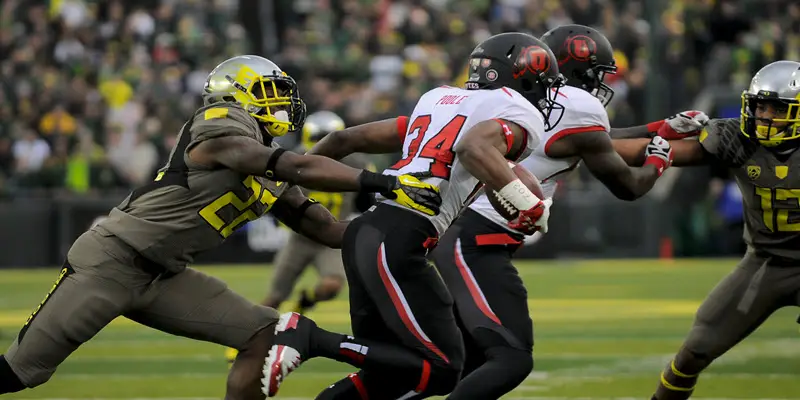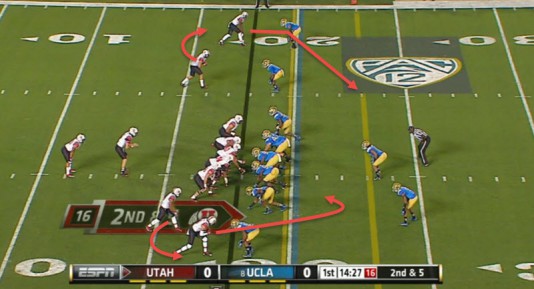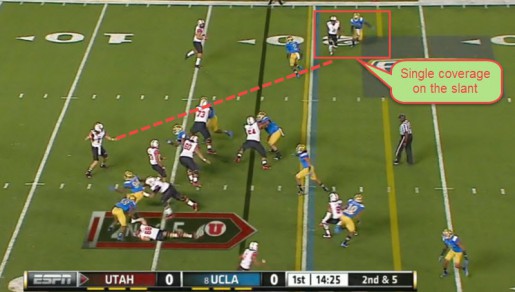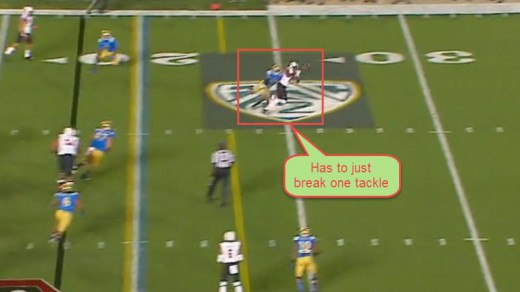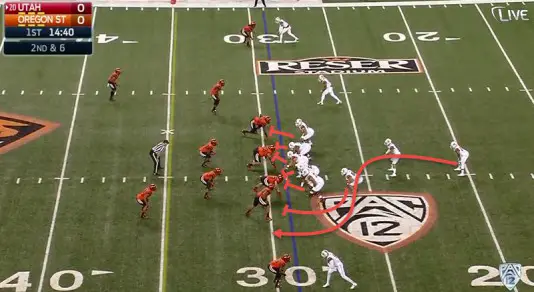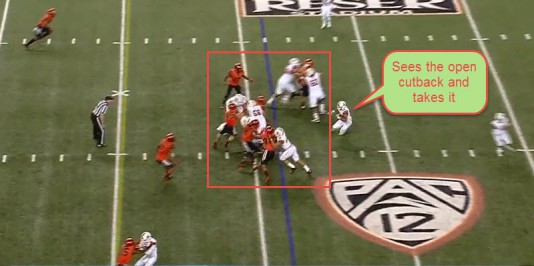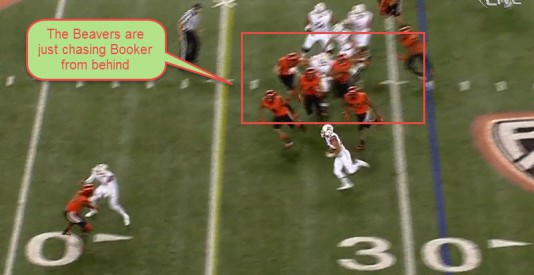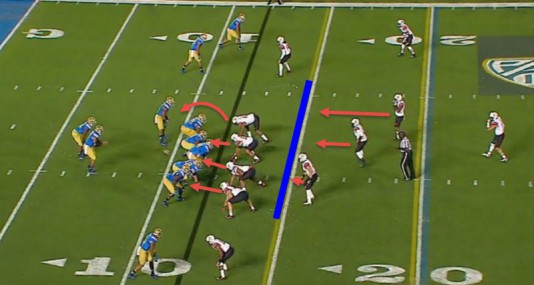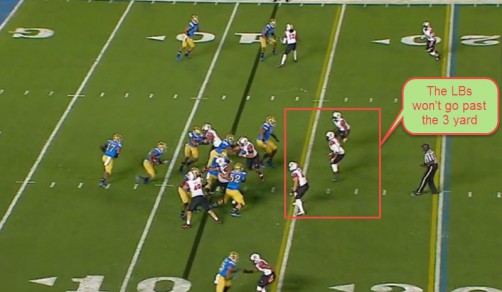This year’s Utah team bears a passing resemblance to the 2009 Sugar Bowl Champion team. That team beat heavily favored Alabama, and ended up ranked #2 in the Coaches’ Poll. The defense was underrated and the offense showed sparks, but was somewhat inconsistent. This year’s team isn’t as good as that team, but they do have the chance to upset a few opponents. Just ask UCLA.
Utah is coming off a very tough stretch of games, at UCLA, at Oregon State, home against USC, and a brutal overtime loss to Arizona State, and now, at home against the Ducks … all in six weeks. This doesn’t mean Utah is battered and weak; it is very much the opposite. Utah has arguably the most explosive player in the conference in Kaelin Clay (WR/KR/PR #8). Clay is easily one of the best returners in the nation with three punt returns for touchdowns on only 12 returns, and a 100-yard kickoff return for a touchdown. Special teams play is going to be a major factor in this game.
Let’s start with Utah’s passing game. Utah has two quarterbacks that split time 70 percent to 30 percent — the passer, Travis Wilson (#7) and the runner, Kendall Thompson (#1). In this play from the UCLA game, Wilson is the quarterback and has his team lined up in doubles (above). Often, defenses will key on the bubble screen when they see this formation. Utah uses this to their advantage as they will often fake the bubble screen and throw the quick slant or the deep ball.
At the snap, you can see that the offensive line lets the defense through to sell the fake. The defense then sees the inside receiver running a bubble screen route,which cements the thought that the play is going to be a bubble screen.
The outside receiver, though, is running a slant route. This quite likely is going to be open, because the linebackers, who should be covering the middle of the field, often get sucked in by the bubble screen fake.
Wilson sees his receiver open over the middle and makes an easy pass. In this case, the ball is dropped by the receiver, but had it been caught, he would have had only his defender and the safety to beat. This play usually results in at least a seven-yard gain, which would be sufficient for any team.
The key to this play is the Utes’ ability to establish the bubble screen game before calling this play. If Utah didn’t do this, the defense would be less prone to bite on the fake as hard as Utah would like, which could result in an incomplete pass, or the receiver getting leveled by a linebacker over the middle.
Now let’s look at the running game. As mentioned earlier, Kendall Thompson is the more mobile quarterback, so it’s worth looking at a run play with him at quarterback. In this play from the double overtime game against Oregon State, Utah is lined up in the Pistol with a tight end in the wing on the left side of the formation.
At the snap, the offensive line takes part in a “slide block.” A slide block is when each lineman blocks his man to a specific side, in this case toward the right side of the field. This allows the running back, Devontae Booker (#23), to effectively cut back when he gets to the line of scrimmage … if he doesn’t like what he sees ahead.
The ball carrier cuts it back, and since the slide blocks make it clear that the play is going to go to the right, the Oregon State linebackers are caught off guard and out of position by the running back. This makes it easy for Booker to get around his tight end, who is sealing off the right outside linebacker, and get upfield for a gain of 12 yards.
Although this is a big gain, had Booker not tripped over his own feet (above), he very well could have gone the distance for a 71-yard touchdown run to open the game. No matter the quarterback, Utah will run this play often.
Utah’s front seven is one of the best in the nation; they lead the country in sacks. So the offensive line is going to have to be on top of its game this Saturday. Take a look at the screenshot above of a read option play by UCLA. Utah is lined up in a 4-3 defense with the linebackers staggered to allow them to cover more ground if it’s a pass.
At the snap, the right defensive end is going to take the quarterback, to prevent Hundley from having the chance to make a play. The three other defensive linemen are going to attack the gaps to their left, leaving only two gaps left to cover. If the linebackers think they see a run, they are going to step up, but go no closer to the line of scrimmage than three yards.
When the linebackers are convinced that it is a read option, two of the linebackers fill the gaps that were not attacked by the linemen, while the third linebacker helps cover the quarterback if he decides to pull it.
When Utah’s game plan is executed properly (below), the result is a short gain — a win for the defense.
Whether the play is a run or pass, Utah’s defensive line is going to be a major hassle for the Ducks’ offensive line.
While some may think that the offensive line’s ability to protect Mariota from the ferocious Utes’ pass rush is going to be the main area to watch, we mustn’t forget about Utah’s run game. Booker has been on fire the past five games, averaging over 150 yards and over a touchdown per game. This team is built to stymie an opponent like Oregon. Utah has a “Stanford formula,” or at least the Stanford of the past two years. The Stanford formula = strong running game + very strong front seven + amazing special teams + disciplined (few penalties and turnovers).
Utah is going to be hungry and ready to prove itself as an elite Pac-12 team. Also the team will be making an effort to stay in the Pac-12 South race, especially after its loss to ASU last week. The Utes will have to do this without star receiver Dres Anderson, who is out for the season with an undisclosed knee injury. However, they will have the help of a strong special teams squad and superb running back Devontae Booker.
But what should viewers expect in the end? Well, Oregon should also put up a fight. This will hopefully lead to a low scoring affair, at least by Oregon’s standards, and a Duck win, 32-20. That’s the way we like it!
“Oh how we love to learn about our opponents on FishDuck.com.”
Rory Davidson
Opponent Football Analyst for CFFNetwork/FishDuck.com
Eugene, Oregon
Top photo by Craig Strobeck
Related Articles:
Chip Kelly Update: Everything's Good Again ...
Chip Kelly Update: Wailing and Gnashing of Teeth
Shock and Awe -- The Oregon Ducks' Football Hangover Effect
Despite Lopsided Score, Georgia State "Never Stopped Believing"
Hope Springs Eternal for Ducks
Incompetent Pac-12 Officials: How Do You Miss ALL of THIS?
Rory Davidson: Rory (Football Analyst) is a sophomore at Oregon in the fall (Class of 2018). He has been a devout Stanford football fan since he was 2 months old and is excited about the energy and greatness Oregon sports has to offer. For the past 6 years he has been doing advanced data analytics for his high school football team and working alongside the coaches to understand how they strategize about the game. He wants to integrate more statistics into his analyses and try to help readers learn about and understand the future of sports.

